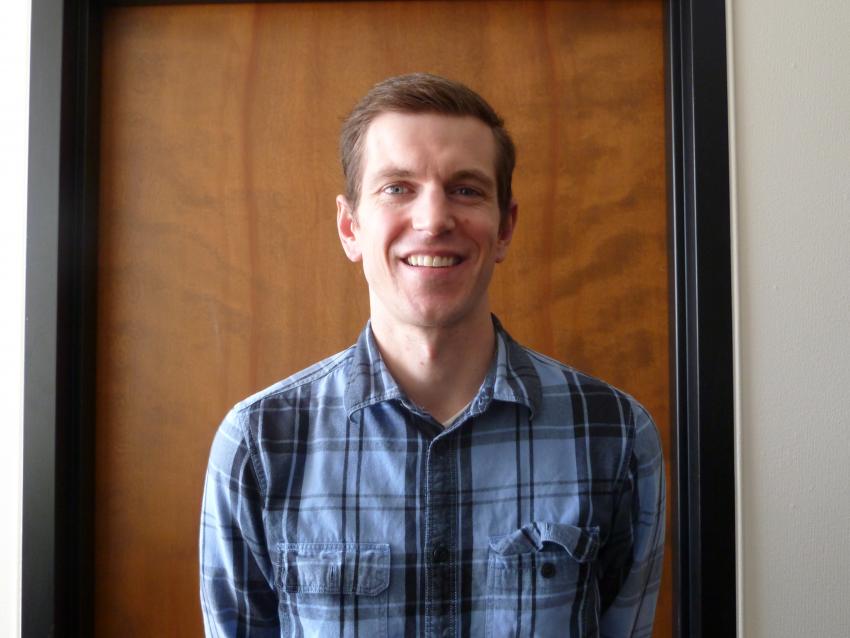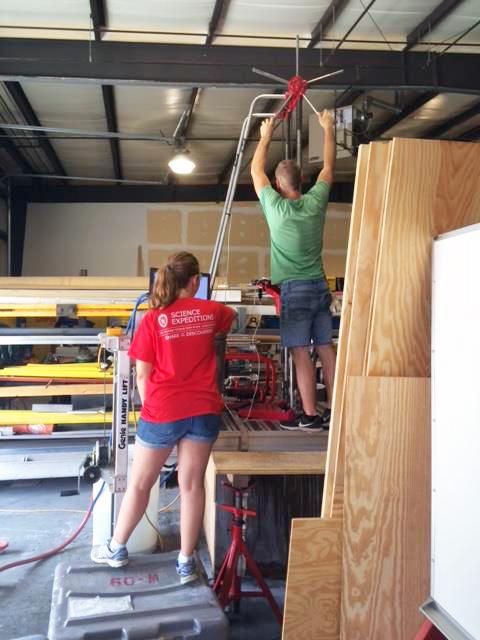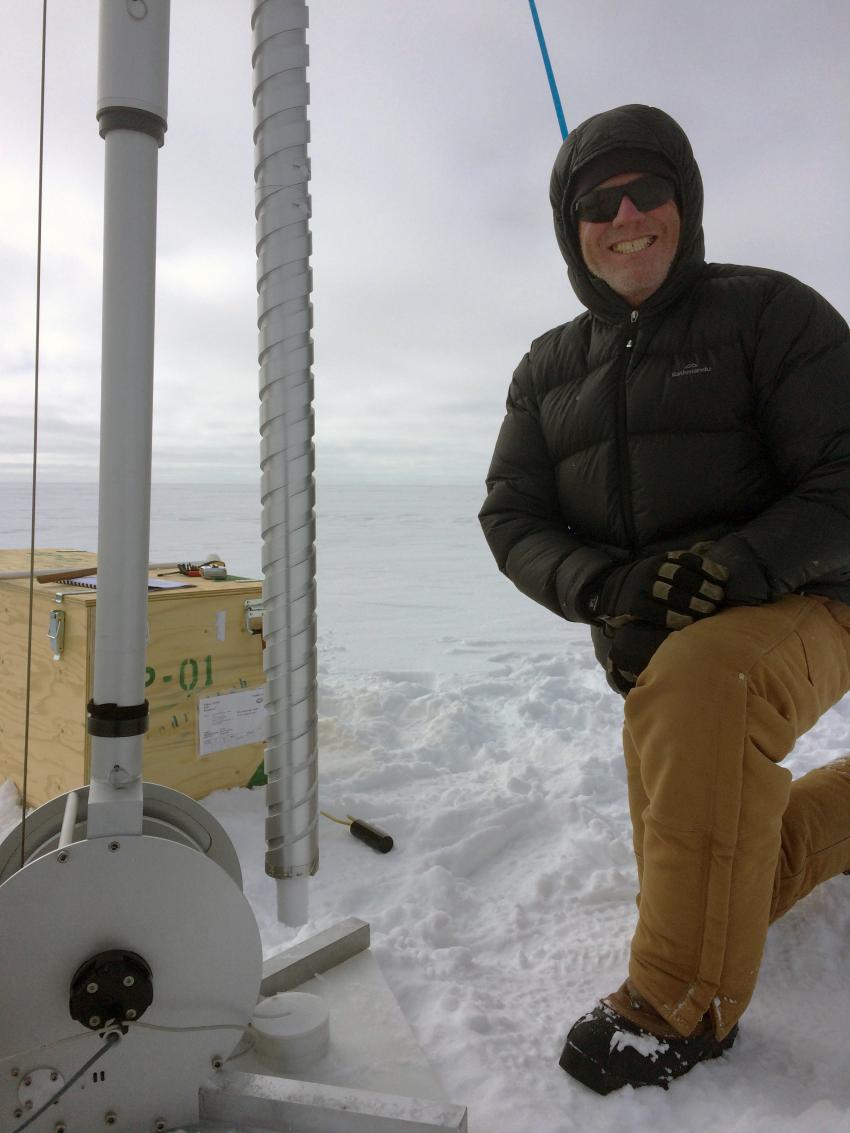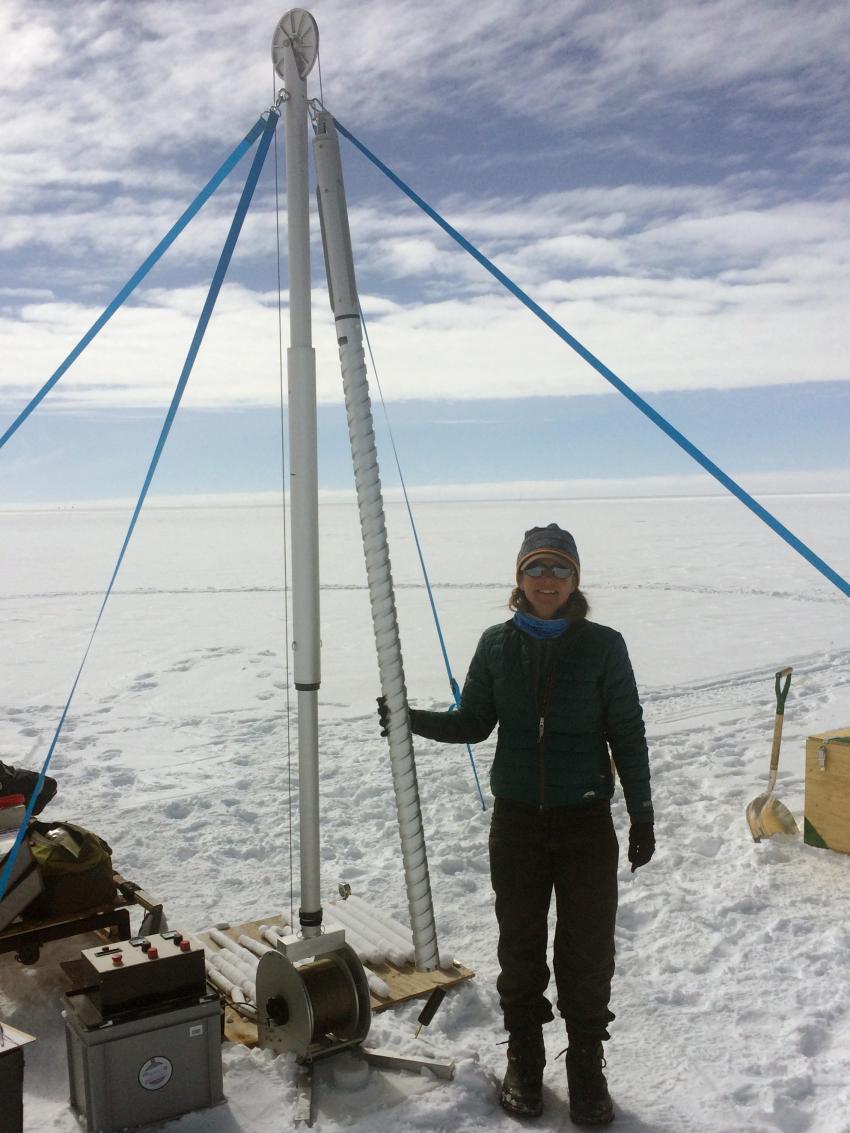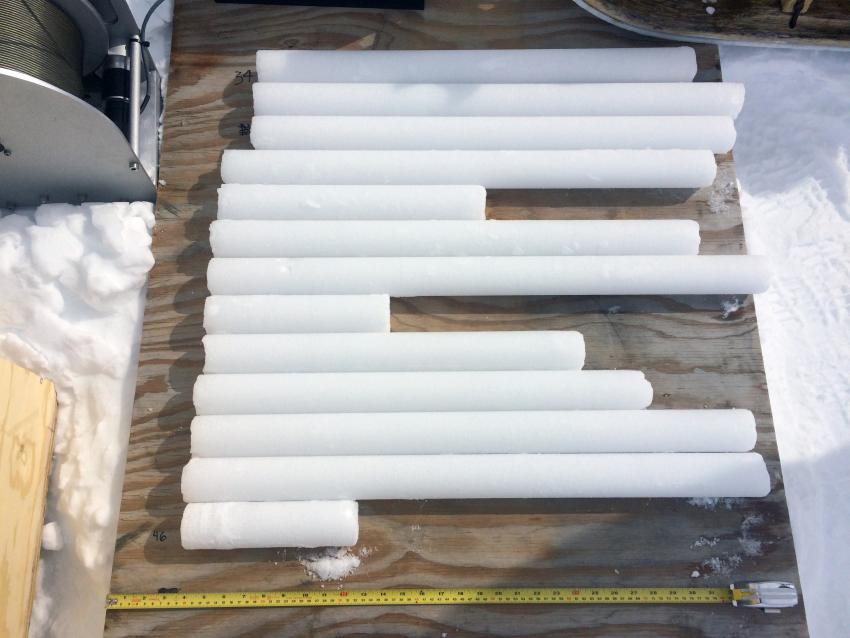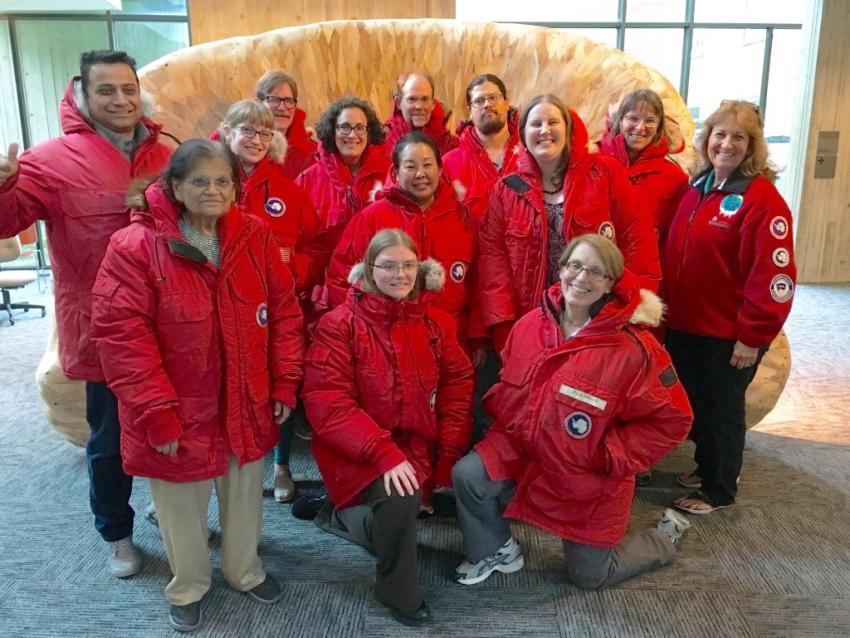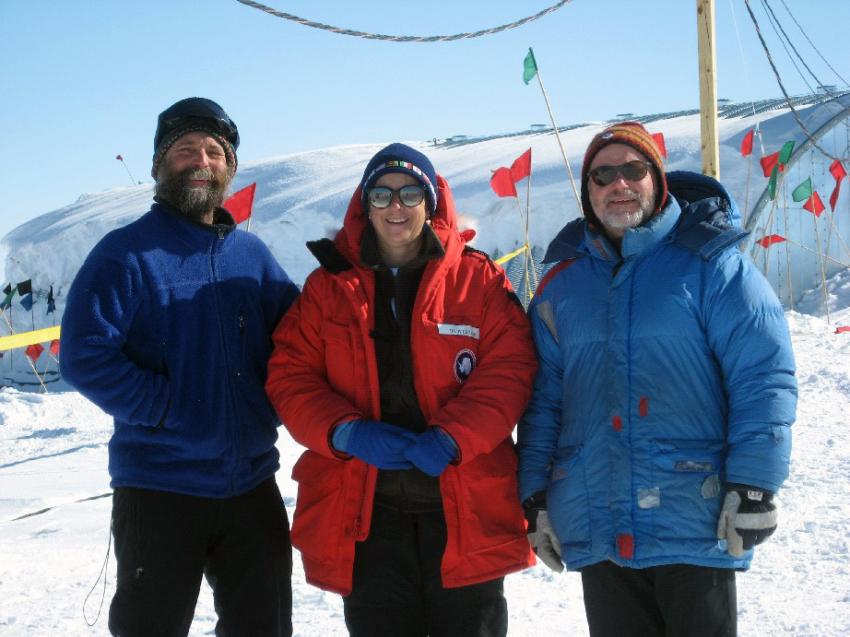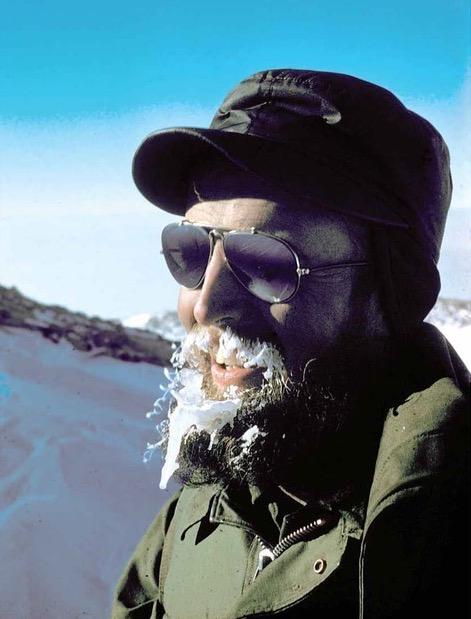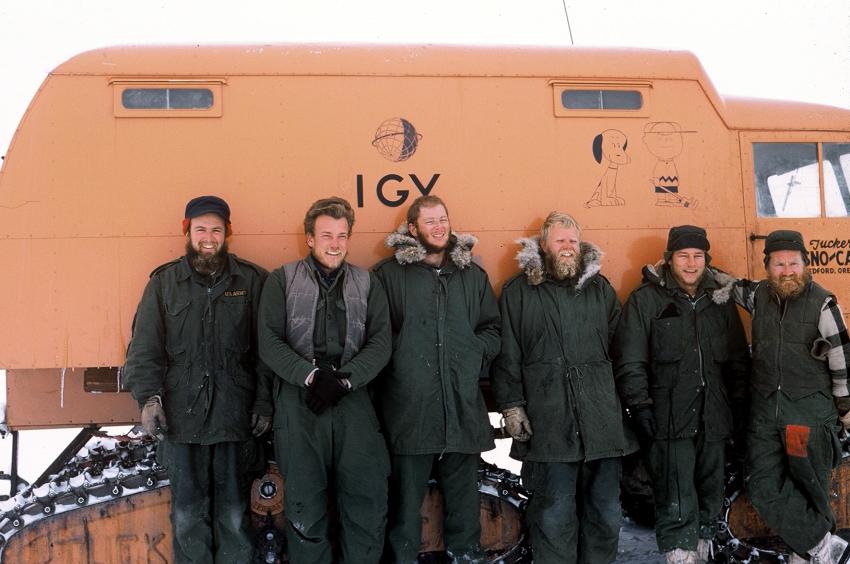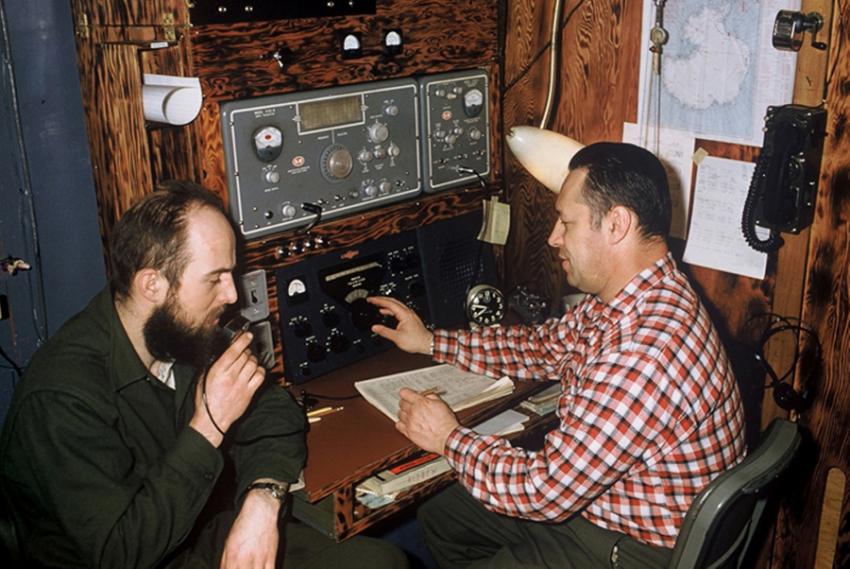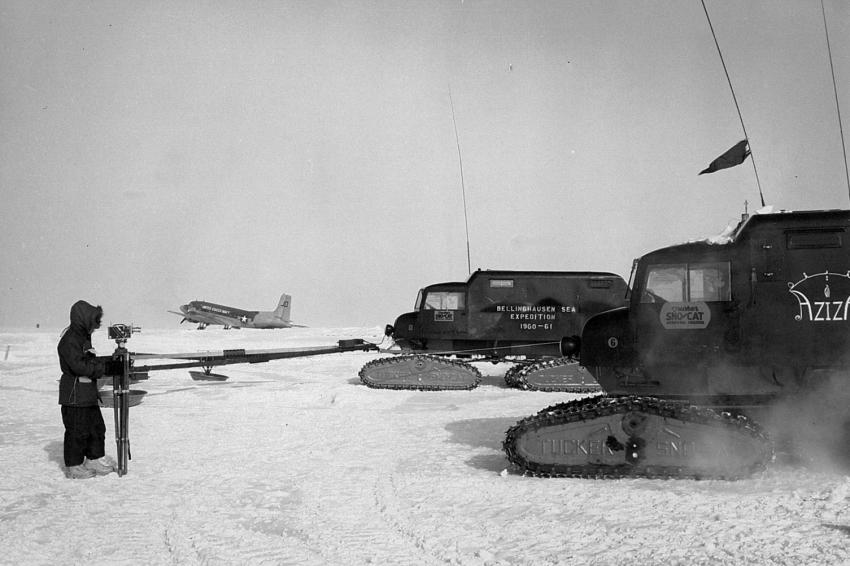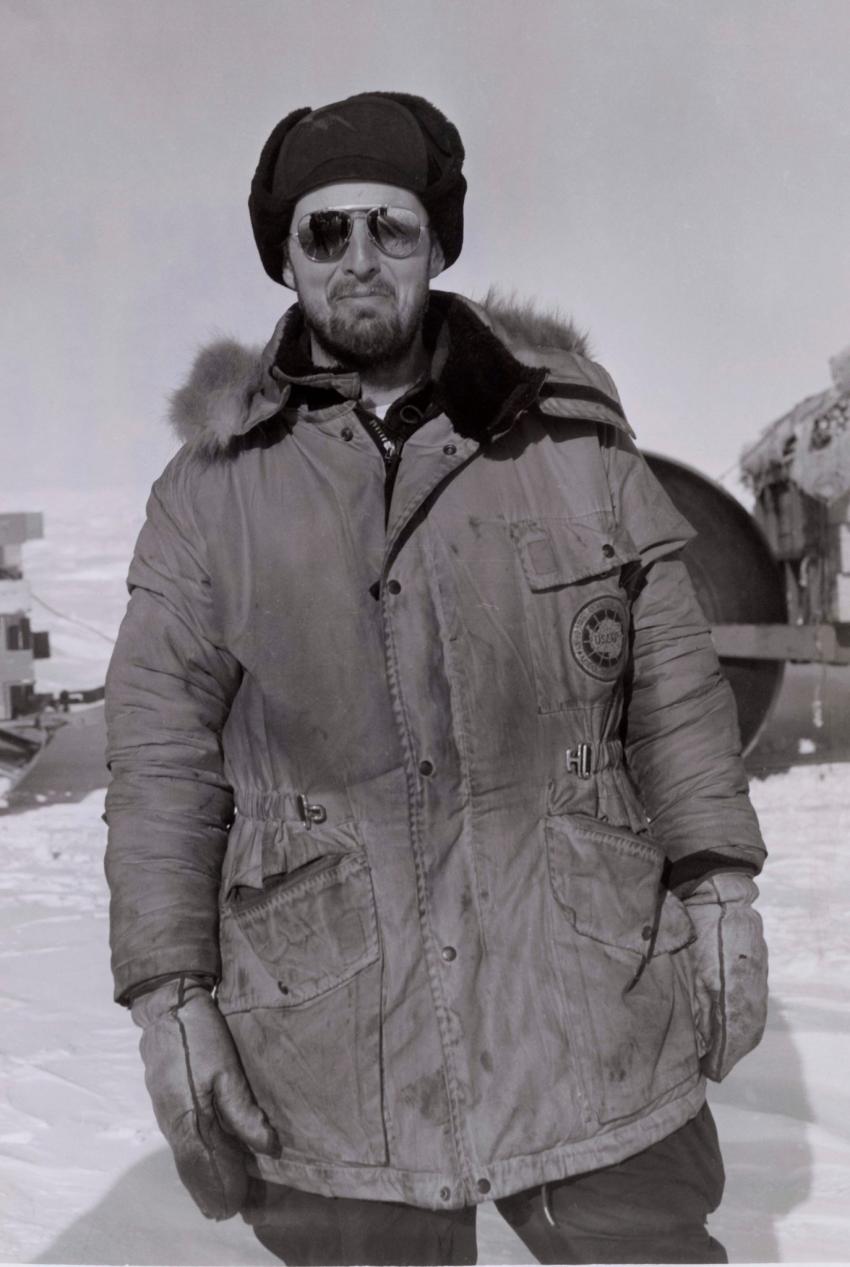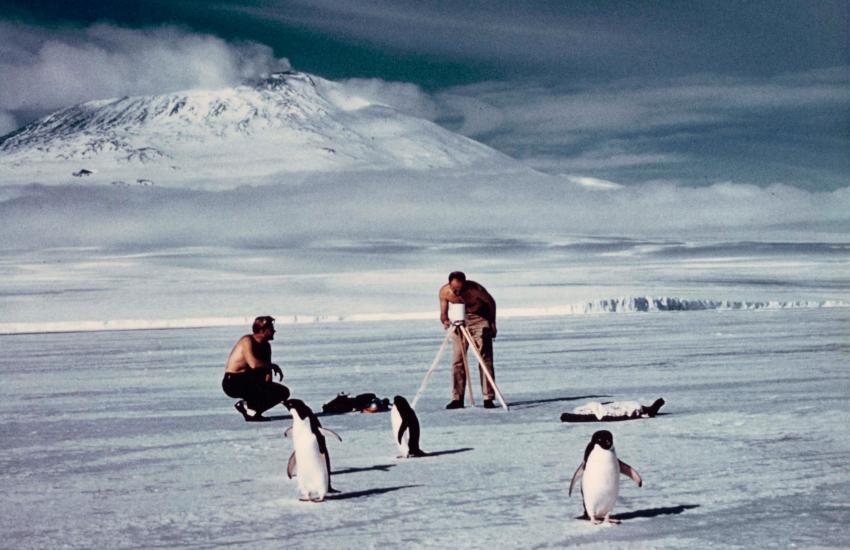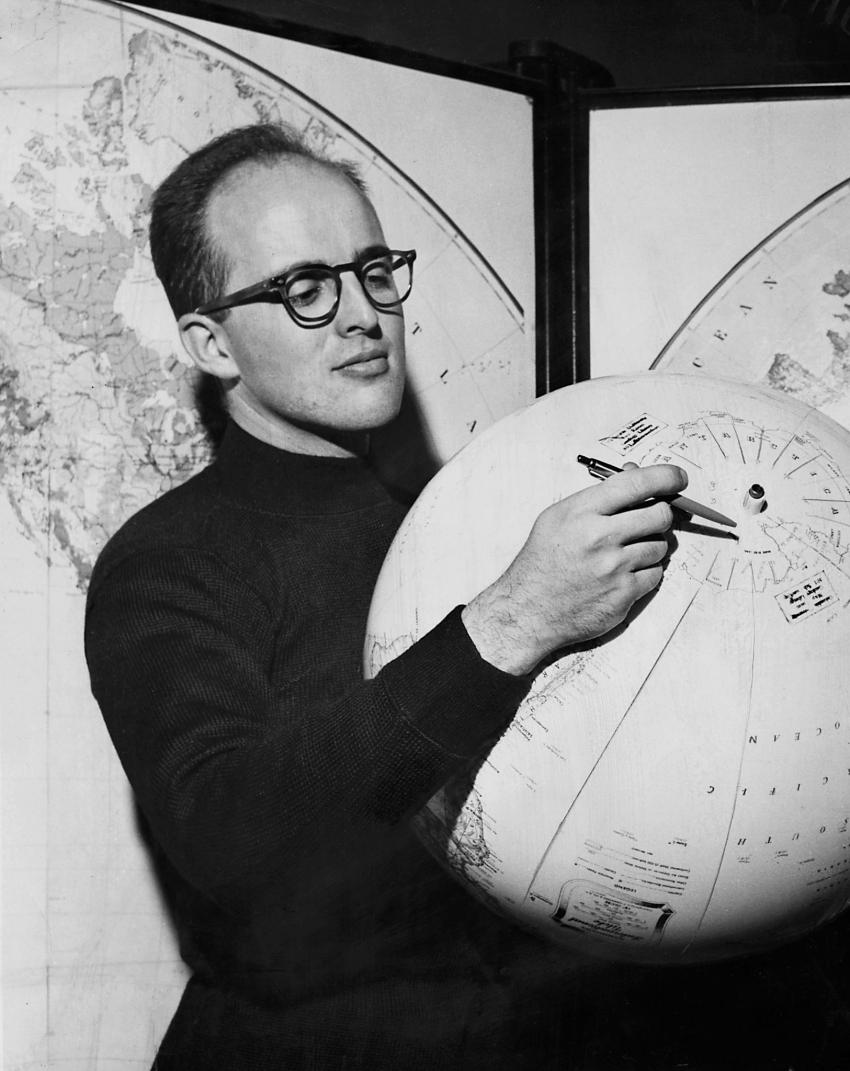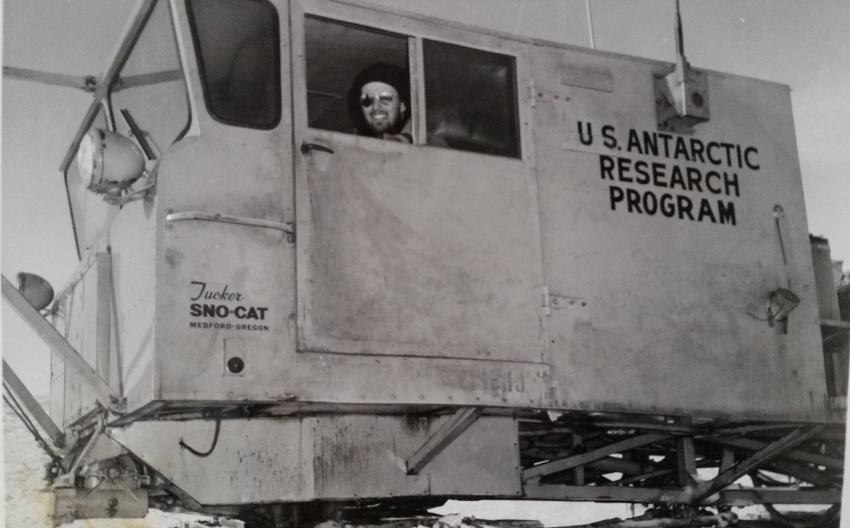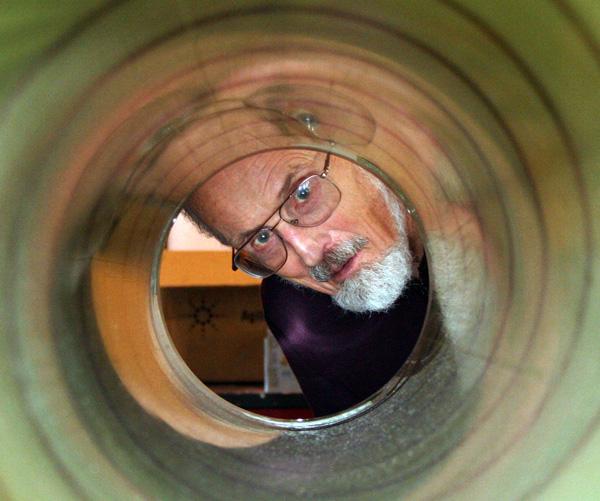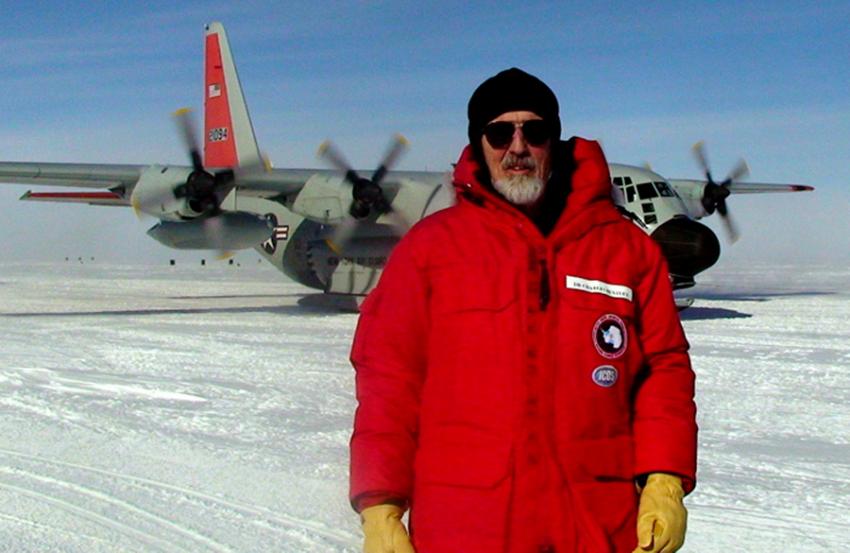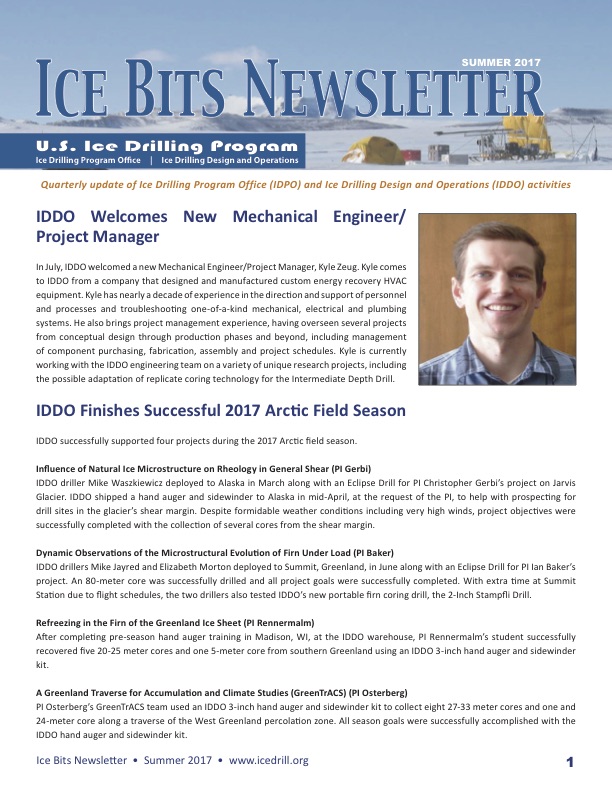In July, IDDO welcomed a new Mechanical Engineer/Project Manager, Kyle Zeug. Kyle comes to IDDO from a company that designed and manufactured custom energy recovery HVAC equipment. Kyle has nearly a decade of experience in the direction and support of personnel and processes and troubleshooting one-of-a-kind mechanical, electrical and plumbing systems. He also brings project management experience, having overseen several projects from conceptual design through production phases and beyond, including management of component purchasing, fabrication, assembly and project schedules. Kyle is currently working with the IDDO engineering team on a variety of unique research projects, including the possible adaptation of replicate coring technology for the Intermediate Depth Drill.
IDDO Welcomes New Mechanical Engineer/Project Manager
IDDO Finishes Successful 2017 Arctic Field Season
- Fieldwork
IDDO successfully supported four projects during the 2017 Arctic field season.
Influence of Natural Ice Microstructure on Rheology in General Shear (PI Gerbi)
IDDO driller Mike Waszkiewicz deployed to Alaska in March along with an Eclipse Drill for PI Christopher Gerbi's project on Jarvis Glacier. IDDO shipped a hand auger and Sidewinder to Alaska in mid-April, at the request of the PI, to help with prospecting for drill sites in the glacier's shear margin. Despite formidable weather conditions including very high winds, project objectives were successfully completed with the collection of several cores from the shear margin.
Dynamic Observations of the Microstructural Evolution of Firn Under Load (PI Baker)
IDDO drillers Mike Jayred and Elizabeth Morton deployed to Summit, Greenland, in June along with an Eclipse Drill for PI Ian Baker's project. An 80-meter core was successfully drilled and all project goals were successfully completed. With extra time at Summit Station due to flight schedules, the two drillers also tested IDDO's new portable firn coring drill, the 2-Inch Stampfli Drill.
Refreezing in the Firn of the Greenland Ice Sheet (PI Rennermalm)
After completing pre-season hand auger training in Madison, WI, at the IDDO warehouse, PI Rennermalm's student successfully recovered five 20-25 meter cores and one 5-meter core from southern Greenland using an IDDO 3-inch hand auger and Sidewinder kit.
A Greenland Traverse for Accumulation and Climate Studies (GreenTrACS) (PI Osterberg)
PI Osterberg's GreenTrACS team used an IDDO 3-inch hand auger and Sidewinder kit to collect eight 27-33 meter cores and one and 24-meter core along a traverse of the West Greenland percolation zone. All season goals were successfully accomplished with the IDDO hand auger and sidewinder kit.
Equipment Development (2017 Summer)
- Winkie Drill
- Stampfli Drill
- Rapid Air Movement (RAM) Drill
- Sediment Laden Lake Ice Drill
- Foro 3000 Drill
- DISC Drill
- Long Range Plans
- Winch Simulator
Winkie Drill
In preparation for the upcoming field season in Antarctica, IDDO outfitted the Winkie Drill with a new electric motor and larger diameter core barrel for collecting 76 mm diameter cores. Testing of the updated drill is ongoing at the IDDO warehouse. The Winkie Drill will be shipped to Antarctica in September where it will be used to collect dirty ice cores in Ong Valley, Antarctica, to depths of up to 20 meters.
Stampfli 2-Inch Drill
IDDO shipped the very lightweight, agile Stampfli 2-Inch Drill system to Greenland for field testing in June in conjunction with a funded field project taking place at Summit Station. The small, solar-powered drill operated well during the field test, producing 58 meters of core. Based on the results of the field test, IDDO is working to make minor repairs and modifications to the drill, procure spare parts, and develop a lightweight packing strategy for this system. The system could be ready for deployment and PI operation as early as the 2017-2018 Antarctic field season.
Rapid Air Movement (RAM) Drill
A conceptual design for extensive weight reduction based on the revised science requirements was completed in July. The conceptual design was presented to community scientists Sridhar Anandakrishnan and Paul Winberry for input in early August. Following that external review and any necessary modifications to the design, IDDO plans to begin purchasing primary components for the lighter-weight RAM Drill system in September/October.
Sediment Laden Lake Ice Drill
The Sediment Laden Lake Ice Drill is a lightweight, field portable hot water drill for drilling through several meters of sediment-laden lake ice. Following the April external design review and the ordering of components in May, IDDO began assembly of the system in June and plans to complete simple functionality testing at the IDDO warehouse in late summer and early fall. The system could be ready for deployment and PI operation as early as the 2018 Arctic field season.
Foro 3000 Drill
The Design Review of the Foro 3000 Drill was held on June 6. The Design Review was a virtual meeting where IDDO presented the Conceptual Design for the drill, and community scientists Eric Steig, Ed Brook, and T.J. Fudge provided feedback from the scientist/user perspective. The Conceptual Design for the drill is now complete. The Foro 3000 Drill is conceptually the same design as the existing Intermediate Depth Drill, but with a depth range extended to 3000 meters and drill run length extended from 2-meters to 3-meters.
DISC Drill versus Foro 3000 Analysis
Per discussions between IDPO, IDDO and community scientists, the next deep U.S. ice coring project will likely target Hercules Dome, Antarctica. IDDO, with assistance from Antarctic Support Contract and IDPO, is currently working with community representatives on a DISC Drill versus Foro 3000 Drill analysis, to help determine which system should be used for drilling at Hercules Dome. The analysis results will be summarized into a report for use by NSF and the science community.
Winch Simulator
Following discussions with Mary Albert and PI Ryan Bay, and due to decreased interest by the science community in IDDO purchasing an off-the-shelf winch simulator unit or designing a custom unit, IDDO plans to design a simple simulator circuit for each logging winch in inventory. IDDO envisions providing these circuit designs to PIs for building at their own institutions. PIs could then perform limited pre-deployment testing on their logging tools; however, IDDO will still encourage PIs to travel to Madison to test logging tools on the actual winches to be deployed. IDDO plans to complete design of the simulator circuits by the end of October.
2017-2027 Long Range Science and Long Range Drilling Technology Plans Updated
- Long Range Plans
The IDPO Science Advisory Board, IDPO, IDDO, and the science community, under Mary Albert's leadership, updated the IDPO Long Range Science Plan. The purpose of the Long Range Science Plan is to articulate goals and make recommendations for the direction for U.S. ice coring and drilling science, and for the development of drilling technology, infrastructure and logistical support needed to enable the science. The companion Long Range Drilling Technology Plan, updated by IDDO, identifies the drills and technologies needed to successfully implement the science in the Long Range Science Plan. Both plans are revisited and revised as appropriate each spring, and are available at http://icedrill.org/scientists/scientists.shtml#scienceplan.
If you will need an ice core or a hole drilled in a glacier or ice sheet in the coming decade, or a rock core from under shallow glacial ice, please make sure that the high-level articulation of your science is captured in the IDPO Long Range Science Plan. If it isn't, send corrections, updates, or additions to Icedrill 'at' Dartmouth 'dot' edu.
School of Ice Development Program Successfully Held at Dartmouth College
- Education/ Outreach
School of Ice, an advanced professional development program for faculty at Minority Serving Institutions, was organized and produced by IDPO at Thayer School of Engineering at Dartmouth College in June. Thirteen scientists and engineers from Dartmouth and the Cold Regions Research and Engineering Laboratory (CRREL) presented their research and provided additional reading materials to build the participants' background knowledge in ice core science and climate change. Elaine Hood from the Antarctic Support Contract participated remotely and talked about the U.S. Antarctic Program's science activities in Antarctica. Louise Huffman, IDPO's Director of Education & Public Outreach, and Lisa Bastiaans, a former School of Ice participant, provided hands-on inquiry labs and activities for the participants to use in their own classrooms to transfer the knowledge to their students. The workshop also included field trips to Dr. Erich Osterberg's ice core laboratory, CRREL, and a walking field trip led by Dr. Meredith Kelly to the remnants of the Last Glacial Maximum near the Dartmouth campus.
NAAEE Outreach Event
- Education/ Outreach
On October 21, Louise Huffman and Sarah Das (Woods Hole Oceanographic Institute) are presenting an ice core science workshop, Cool Science Explains a Warming World, at the North American Association of Environmental Educators 46th Annual Conference.
Dr. Julie Palais Awarded Richardson Medal
The International Glaciological Society has awarded the Society's Richardson Medal to Julie Palais, a long standing member of the International Glaciological Society.
Dr. Palais has made extraordinary contributions to glaciology through establishment and decades of facilitation of glaciological and ice core science in the U.S., and in addition she has facilitated the establishment and international leadership of the International Partnerships in Ice Core Sciences (IPICS) in 2004, early in the planning for the International Polar Year. The glaciology and ice core science communities have produced groundbreaking discoveries that would not have been possible without the insightful and steadfast advocacy by Dr. Palais through her service at the National Science Foundation.
Dr. Palais began working in glaciology and ice core science during her graduate research at Ohio State. Her research for her Master's degree focused on depositional and diagenetic processes influencing firn stratigraphy at Dome C, Antarctica; this served as a catalyst for her PhD research at Ohio State, which focused on tephra layers and ice chemistry in the Byrd Station ice core. She continued in research and academia as faculty at the University of New Hampshire. Dr. Palais was productive in publishing a variety of discoveries that she made on the topic of volcanic records in ice cores from both the Antarctic and Arctic Ice Sheets. Her strong background in glaciology and ice core science became a key asset for the National Science Foundation when she began her work there.
For over 26 years, Dr. Palais served as a Program Director at the NSF, managing peer-review processes and reviews, coordinating interdisciplinary coalitions of scientists to encourage scientific collaborations, including serving as Antarctic Glaciology Program Director. In this capacity her scientific vision, collaborative style and personal influence served to nurture and grow the ice core science program in the U.S., and she also fostered international collaboration in ice core sciences. Not only was she successful in finding creative ways to make the most efficient and effective use of NSF resources, but Dr. Palais was always very responsive to, and an advocate for the scientific community. As a result, the Antarctic Glaciology Program that Dr. Palais led at NSF has been one of the most productive and impactful programs within the NSF. Through her service to the scientific community while at NSF, Dr. Palais fostered groundbreaking discoveries of importance to all society.
Dr. Palais has been recognized through a number of awards, including the Chateaubriand Fellowship by the government of France, the U.S. Antarctic Service Medal, and the Lowell Thomas Award from the Explorer's Club. In recognition of her prominence, Palais Bluff and Palais Glacier in Antarctica are named after Dr. Julie Palais. Dr. Palais is internationally recognized in glaciology.
As a productive scientist, as a senior NSF Program Director whose groundbreaking efforts established a strong, internationally-coordinated U.S. ice core research program, and as an internationally recognized glaciologist and ice core scientist, Dr. Julie Palais has made outstanding service contributions to the U.S. and international glaciological and climate science communities.
Story credit: The Awards Committee of the International Glaciological Society
https://www.igsoc.org/awards/richardson/palais.html
Charles Bentley, Pioneering UW-Madison Glaciologist, Dies
Text by Terry Devitt | University of Wisconsin-Madison
Charles R. Bentley, an intrepid University of Wisconsin-Madison glaciologist and geophysicist who was among the first scientists to measure the West Antarctic Ice Sheet in the late 1950s, died Aug. 19 in Oakland, California. He was 87.
Bentley spent the bulk of his career studying the Antarctic Ice Sheet and the continent beneath it.
Beginning in 1957, Bentley spent 25 consecutive months on the ice in Antarctica, at a time when scientists from around the world were converging on the continent as part of the International Geophysical Year. During that time, he served as the seismologist on a five-person expedition that motored in tracked vehicles called Tucker Sno-Cats from Little America (a U.S. base near the edge of the Ross Ice Shelf) to Byrd Station in interior West Antarctica on a nearly 700-mile traverse. After wintering over at Byrd Station, Bentley and his colleagues continued their explorations of the continent for a total of almost 3,000 miles of traversing the then almost completely unexplored Antarctic.
During the expedition, Bentley and his colleagues made the first detailed measurements of the depth of the ice sheet. To measure the underlying snow and ice, the team unspooled hundred of meters of cables attached to geophones set on the ice surface to record explosions set off in the ice. The explosions sent sound waves to the bottom of the ice sheet, which reflected back to the geophones to provide a measure of the depth of the ice. To their surprise, they found the ice sheet, which in places is as much as 3,000 meters thick, to be as far below sea level as it was above, making it a marine ice sheet.
That finding resonates today as marine ice sheets are particularly vulnerable to melting and collapse in climate change scenarios.
"During those first 25 months in Antarctica, Bentley led geophysical traverses that fundamentally changed our view of the ice sheet — far from being a thin layer draped over high mountains, the ice in places was well over two miles thick, with a surface high above sea level but a bed that plunged far below, including into the Bentley Trench, the deepest point on the Earth's surface not now under the ocean," says Richard Alley, a former student of Bentley's who is now the Evan Pugh Professor of Geosciences and the EMS Environmental Institute at Penn State University.
Charles Bentley, far left, and the rest of the Byrd Station traverse team pose in front of a Tucker Sno-Cat in February 1958 after a season of discoveries around West Antarctica. Bentley served as the expedition's seismologist during the 25 months he spent on the Ice during the International Geophysical Year. Credit: Charles Bentley.
Bentley made at least 15 trips over seven decades to the ice. He celebrated his 80th birthday on his last trip to Antarctica in 2009, nearly 50 years after first setting foot on the continent. In Antarctica, Mount Bentley, the highest peak in what are now known as the Ellsworth Mountains, and the Bentley Subglacial Trench, an ice-filled trench the size of Mexico, are named in his honor. "I claim to be the only person with a hill and hole named after him," Bentley told an interviewer in 2008.
"Charlie was one of our most esteemed faculty and a giant in geophysics and glaciology," says John Valley, a UW-Madison professor of geoscience. "His students are leaders in studying climate change."
Bentley was a member of the National Academy of Sciences' Polar Research Board for nearly 20 years, chairing the panel from 1981 to 1985. He received numerous awards for his work, including the Bellingshausen-Lazarev Medal in 1971 from the Soviet Academy of Sciences, and the Seligman Crystal from the International Glaciological Society in 1990. He was an elected fellow of the American Association for the Advancement of Science, the American Geophysical Union and the Arctic Institute of North America.
Born in Rochester, New York, in 1929, Bentley received his undergraduate degree in physics from Yale and was awarded his doctorate from Columbia University in 1959, nearly two years after successfully defending his thesis. He learned of the delay — the result of failure to pay a $50 dissertation fee — after spending two austral winters at Byrd Station.
Bentley joined the UW-Madison faculty in 1961 and was the A.P. Crary Professor of Geophysics. After arriving at Wisconsin, he turned his sights "first and foremost on training generations of glaciologists and geophysicists," recalls Sridhar Anandakrishnan, a Penn State professor of geosciences and another of Bentley's former students.
Over a long career, Bentley published more than 200 scientific papers and, in addition to characterizing the three-dimensional structure and physical qualities of the ice sheet, he showed that the fast-moving ice streams that lace the ice are lubricated by soft till at the base.
After retiring from the Wisconsin geoscience faculty, Bentley assumed leadership of the Ice Drilling Design and Operations program based at UW-Madison's Space Science and Engineering Center in 2000, a program he oversaw until 2013. The program builds and deploys drills to recover ice cores and other samples from Greenland to Antarctica.
While Bentley's scientific contributions to understanding the Antarctic ice inform much of the work still being undertaken on the continent's ice sheets, he has left one other signal relic for future generations: his collection of chamber music. Leaving Byrd Station after 25 months in 1959, he loaned his records to an incoming seismologist. "He never brought them back. My records are still out there. I always had the idea I could go back and get them."
Bentley is survived by son Alex (and spouse Emma Bentley), daughter Molly (and spouse Gordy Slack), step-grandsons Jonah Taranta-Slack and Leo Taranta-Slack, and grandson Archer Bentley.
Charlie Bentley Commemorative Event
Our dear friend, mentor and colleague, Charles Bentley, passed away on August 19th after a beautiful and accomplished life and career. A commemorative reception will be held on Friday, September 22nd on the University of Wisconsin-Madison Campus. Light refreshments will be served. While a formal program will not be held, guests will be able to visit a number of spaces to view photos, videos, Antarctic memorabilia and to share stories of the man that touched so many lives.
As we plan for this event, please feel free to send any photos of Charlie that you would like included in a slide show shown at the gathering to kristina.slawny@wisc.edu. In addition, if you are a former student of Charlie's, please visit this website to add your information (and that of your own students, if applicable) to Charlie's academic family tree.
https://academictree.org/physics/peopleinfo.php?pid=665035
Event: Commemorative Reception honoring Charlie Bentley
Date: Friday, September 22, 2017
Location: UW-Madison Geoscience Building, 1215 W. Dayton Street, Madison, WI 53706
Time: 5:00 - 8:00pm
**RSVP: To assist the hosts in planning for refreshments, please RSVP to kristina.slawny@wisc.edu by Friday, September 15th.**
A memorial service will be held the following day on September 23rd at the Unitarian Church, 900 University Bay Drive, Madison, WI 53705 at 10:00am, with a reception to follow. A private burial will be held on Sunday.
We hope you will join us. Please feel free to distribute this far and wide. All are welcome.


